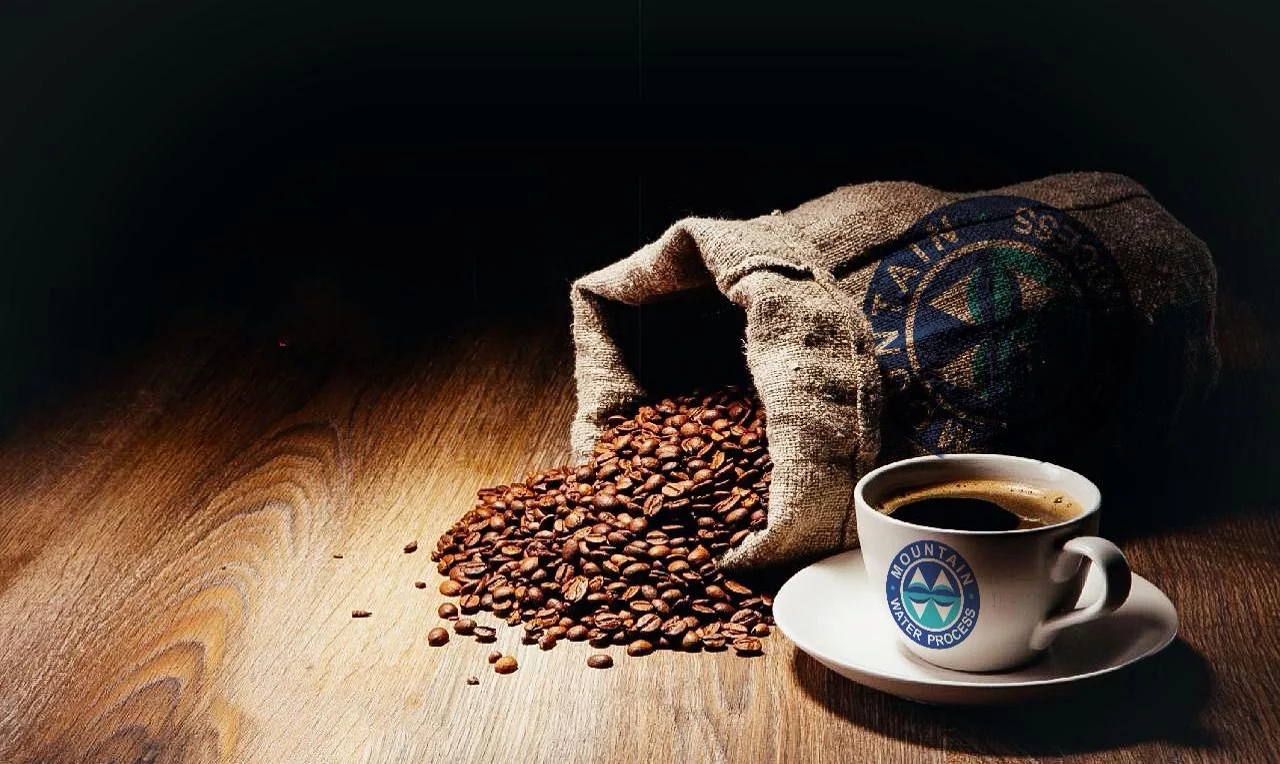One of the things that puts newcomers off decaf coffee blends is the enigma surrounding their creation. What exactly are we dealing with here? Sinister synthesis? Chemical concoctions? Just how is decaf coffee made?
Call us biased – the name of our brand might be a dead giveaway here – but we think decaf coffee gets a bad rap. When sourced, decaffeinated, and brewed correctly, it can be every bit as delicious as its caffeinated counterpart. Don’t believe us?
In this post, we’ll be diving into the various methods of decaffeination. By cutting through the mystery surrounding decaffeination, our hope is that you’ll leave with a better understanding that the word “decaf” needn’t be a dirty one.
So, How is Decaf Coffee Made?
How long is a ball of string? (sorry!). There are several methods of decaffeination, each with their own merits and cons. We’ll explore the four primary decaffeination processes further down this page. Suffice it to say, however, that decaf coffee is usually made in one of three ways:
- The beans are processed using solvents.
- The beans are processed using carbon dioxide.
- The beans are processed using pure, filtered water.
Which option you spring for as a consumer all comes down to your budget, taste preference, and where you are in the world. It’s worth noting at this juncture that not all methods of decaffeination are created equal. Some harsher approaches can tarnish the flavour of the much-loved bean. We explore this below.
Your Decaffeination Process for Coffee and its Consequences
So, you’re desperate to ride the decaf wagon and just want to pick up something now. While it can be tempting to just grab the first thing you find, it’s important to remember that there’s plenty of snake (or is it coffee?) oil out there. Even expensive brands can use methods of decaffeination that leave a bitter taste in the mouth, in more ways than one.
The reality is that this stuff isn’t rocket science, but it’s not basic arithmetic either. Let’s explore why.
Coffee is Complex
There’s a lot going on in most coffee beans. Up to 800 volatile and hundreds more non-volatile compounds make up the composition, aroma, and flavour of the world’s morning ritual. If you’re asking “how is decaf coffee made?”, it’s just as important to ask “which method did this company use to decaffeinate these beans?”.
Not as catchy, we get that, but we’re right. You want as few of these compounds to be affected by the decaffeination process as possible.
Decaffeinating Gently is a Challenge
It should come as no surprise that removing just one compound, caffeine, from a cacophony of thousands isn’t exactly a simple process. Imagine searching for a needle in a haystack… in a field of haystacks. While science has come a long way from the coffee shops of yore, it’s still harder than we might like to preserve coffee’s greatest asset – its taste.
Coffee is, Well, Delicious
Coffee’s caffeine kick is certainly one of its most popular features, but we think it’s trumped by its flavour. Call us snobs, but once you’ve tasted coffee that’s truly delicious, it’s very hard to go back.
It’s Frustratingly Subjective
What sends your tastebuds soaring might have someone else doubling over. While a harsher decaffeination process for coffee is likely to yield less palatable results, there’s no guarantee that you’ll like the taste of a ground just because other people have positive things to say about it.
It might take some trial and error before you know which kind of decaf coffee is right for you.
How is Decaf Coffee Made – The Methods of Decaffeination
We’ve waxed lyrical about why the method you choose matters. Let’s now explore the main options that exist today. So, how is decaf coffee made?
The C02 Method
Developed by the German chemist, Kurt Zosel, the C02 method of decaffeinating coffee beans is very popular. This is largely down to the fact that it’s cheap and very easy to scale. Zosel favoured carbon dioxide over solvents to eliminate caffeine from his coffee.
The result is a process that’s still widely used today. Got a huge volume of coffee that you need to decaffeinate for supermarket shelves? Simply pump in some liquid C02 and you’re sorted.
The larger compounds of coffee are mostly left behind by this impressive process, but some of the more delicate molecules can also be picked up by the injected C02. Once the liquid C02 returns to its gaseous state in this method, it can then be repressurised and used again countless times – not bad when it comes to sustainability and environmental impact!
Some consumers find that C02 coffee has an overly bitter taste that isn’t always desirable.
The C02 Method at a Glance:
- Cheap.
- Used to decaffeinate large quantities of coffee for supermarkets.
- Effective, but not great for gourmet or exotic coffee.
- Coffee beans are soaked in water before treatment.
- They’re then sealed in a stainless steel container called an extraction vessel.
- Liquid C02 is then injected into the vessel at very high pressures, absorbing the caffeine molecules.
- The “caffeinated” C02 is now transferred to an “absorption chamber” where the pressure and caffeine are released.
The Direct-Solvent Process
Germany deserves props for being a huge pioneer of decaf developments; the German merchant, Ludwig Roselius, first used the direct-solvent decaffeination method in 1905. At the time, Roselius used a chemical called benzine to achieve his jitters-free brew. With hindsight, it’s easy to see why this wasn’t the best move – benzene is now known to be pretty toxic to humans.
These days, ethyl acetate and methylene chloride are used as alternatives. Both compounds are currently considered to be safe to humans. The direct-solvent method involves first steaming green beans and then soaking them in a solvent solution.
This absorbs the majority of the coffee’s caffeine content. Unfortunately, this all-too-heavy-handed approach also eliminates a bunch of the compounds that make coffee so delicious in the first place. After their soak, beans are steamed, dried, and roasted to eliminate any signs of the solvent.
The Direct-Solvent Method at a Glance:
- Relatively cheap and effective.
- Once used the solvent benzene which is now a known carcinogen.
- Green coffee beans are steamed to open their pores.
- They’re then soaked in a solvent which absorbs the caffeine.
- However, this also absorbs a number of other delicious coffee compounds.
The Indirect-Solvent Process
Café HAG, a coffee brand developed by the very same Ludwig Roselius we discussed above, later developed a solvent decaffeination process that was indirect. Instead of soaking the beans directly in a solvent, the caffeine (and other compounds) are released into hot water and the beans are removed. The solvent is then added to work its magic on the caffeine within.
Once the solvent has been safely removed from this solution, the beans are added back to reabsorb some of their vital flavour compounds. While the results of this method can be hit and miss for some, it’s certainly a better option than a direct method if the flavour of your coffee matters to you.
The Indirect-Solvent Method at a Glance:
- Preserves more coffee flavour.
- Similarly cheap and effective.
- Similar to the direct-solvent process, except the green beans are soaked in hot water first.
- The beans are then removed from the water and the solvent is added.
- The solvent is then removed and the beans added back, helping them reabsorb some flavour.
4th Time’s the Charm – The Swiss Water Method
No bonus points for guessing where this method of decaffeination was invented! The Swiss Water method or the Mountain Water method involves steps that are similar to some of the approaches described above. The difference here, however, is that significantly more flavour compounds are reabsorbed into the coffee beans.
When done properly, Swiss Water decaffeinated beans can be near indistinguishable from “normal” coffee. To us, it’s one of the best answers to the question “how is decaf coffee made?”
The process looks a little something like this:
- Take high-quality green coffee beans and soak them in hot water.
- Allow the caffeine and other compounds to release into the water.
- Pass this water through an ultra-fine filter that removes caffeine and little else (small amounts of other compounds will inevitably be captured too but at much smaller quantities).
- You now have a concentrated coffee extract that’s full to the brim with flavour and low on caffeine (0.01%).
- Use this delicious coffee extract to decaffeinate a new batch of green coffee beans.
- Because your water is already concentrated with flavour compounds, only caffeine is removed from these new beans.
This last step is so important in Swiss water decaffeination. Significantly more flavour is preserved in every single bean. It’s chemical-free, super safe, and has been producing jaw-droppingly delicious coffee for years.
The Swiss Water Method at a Glance:
- More time-consuming.
- Can be more expensive.
- Preserves the flavour of coffee much more effectively.
- Uses just water, heat, carbon filters, and time.
Your Answer to “How is Decaf Coffee Made?”
Some of the I Love Decaf range uses only the finest beans and the Swiss water or the Mountain Water method to gently decaffeinate your morning brew. We appreciate that we’re not the only decaf option out there, but we truly believe we’re head and shoulders above the rest.
We take the time needed to ensure that every single batch maintains the same standards and delicious flavour. Try it for yourself today – you won’t regret it.

